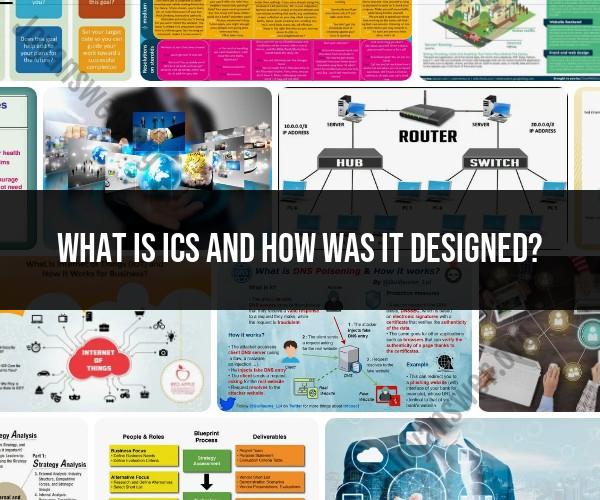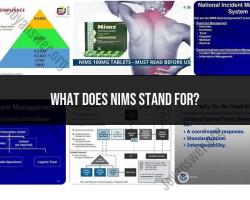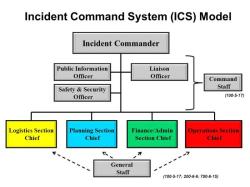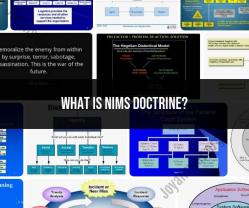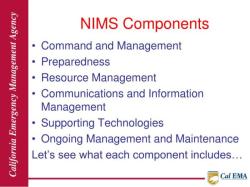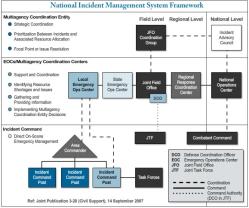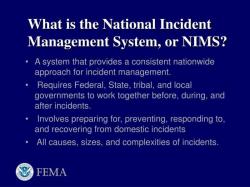What is ICS and how was it designed?
The Incident Command System (ICS) is a standardized management framework designed to facilitate effective incident management and response. ICS provides a flexible and scalable structure that allows for the integration of personnel, equipment, procedures, and communication to effectively manage incidents of any size or complexity. It was originally developed in the United States and has since been adopted internationally. Here is an introduction to the Incident Command System:
Design and Purpose of ICS:
Origins:
- ICS originated in the 1970s in response to a series of wildfires in California. The need for a more organized and integrated approach to incident management became evident as multiple agencies and jurisdictions were involved in responding to the incidents.
Purpose:
- The primary purpose of ICS is to provide a standardized, systematic approach to incident management. It enables personnel from different agencies and jurisdictions to work together seamlessly during incidents, emergencies, and disasters.
Flexibility and Scalability:
- ICS is designed to be flexible and scalable, allowing it to adapt to incidents of varying sizes and complexities. Whether managing a small incident with a single agency or a large, complex incident involving multiple jurisdictions and organizations, ICS can be scaled up or down accordingly.
Common Terminology:
- ICS promotes the use of common terminology to ensure clear and consistent communication among responders from different agencies. Standardized language helps prevent misunderstandings and ensures a common understanding of roles, responsibilities, and procedures.
Modular Organization:
- ICS features a modular organization that allows for the efficient and effective management of resources. The organization can expand or contract based on the needs of the incident. Key components include the Incident Command Post (ICP), General Staff, and functional units.
Unified Command:
- ICS emphasizes the concept of Unified Command, where personnel from multiple agencies work together under a single, unified structure. This ensures that decisions are made collectively, and resources are coordinated across jurisdictions.
Integrated Communications:
- ICS promotes integrated and interoperable communications. Effective communication systems help ensure that information is shared among all responding agencies and organizations.
Incident Action Plans (IAPs):
- ICS incorporates the development and use of Incident Action Plans (IAPs). These plans outline incident objectives, strategies, and tactics, providing a common framework for all responders.
Management by Objectives:
- ICS follows a management-by-objectives approach. Incident managers set clear objectives, and resources are allocated and directed toward achieving those objectives.
Accountability:
- ICS places a strong emphasis on accountability. Clear roles, responsibilities, and lines of authority are established to ensure that all personnel know their assignments and report to the appropriate supervisors.
Continuous Improvement:
- ICS encourages a culture of continuous improvement. After-action reviews and evaluations following incidents contribute to ongoing enhancements in incident management capabilities.
Adoption and International Use:
- ICS was initially developed in the United States but has been widely adopted internationally. It is used by various agencies, organizations, and countries to ensure a coordinated and effective response to incidents and emergencies.
In summary, the Incident Command System is a comprehensive and adaptable framework that was designed to bring order and efficiency to incident management. Its principles and structure have proven effective in a wide range of incidents, from wildfires and natural disasters to public health emergencies and large-scale events.
What is the design and purpose behind the Incident Command System (ICS)?
The Incident Command System (ICS) is a standardized organizational structure and set of procedures designed to effectively manage an incident of any size or complexity. Its design and purpose can be understood through three key aspects:
Design:
- Modular and Scalable: ICS is built on a series of modules that can be added or removed depending on the size and requirements of the incident. This flexibility allows it to adapt to any situation, from a small fire to a large-scale disaster.
- Unified Command: ICS establishes a single incident commander with overall authority and responsibility for the response. This centralized leadership eliminates confusion and ensures coordinated action.
- Span of Control: ICS follows the "span of control" principle, limiting the number of direct reports to an individual manager to ensure effective communication and oversight.
- Common Terminology and Procedures: ICS uses standardized terminology and procedures that are understood by all responders, regardless of their agency or jurisdiction. This promotes coordination and interoperability among different groups working on the incident.
Purpose:
- Effective and Efficient Response: The primary purpose of ICS is to facilitate a quick and efficient response to any incident. The system's structure and procedures aim to optimize resource allocation, decision-making, and communication among all responders.
- Safety and Well-being: ICS prioritizes the safety and well-being of all personnel involved in the incident response. The system includes provisions for responder safety, fatigue management, and stress management.
- Protection of Life and Property: ICS focuses on minimizing the potential loss of life and damage to property caused by the incident. The system's structure and procedures help to ensure that resources are deployed effectively to achieve this goal.
- Recovery and Restoration: ICS extends beyond the immediate response phase and facilitates the recovery and restoration efforts following an incident. The system helps to coordinate the activities necessary to return the affected community to its normal state.
Applications:
- ICS is used by a wide range of organizations, including fire departments, emergency medical services, law enforcement agencies, hazardous materials teams, and even private companies. It is a valuable tool for managing any type of incident, from natural disasters to technological accidents.
Overall, the design and purpose of ICS are to provide a flexible, efficient, and coordinated approach to incident response that prioritizes safety, recovery, and the well-being of all involved.
I hope this explanation gives you a clearer understanding of the Incident Command System. If you have any further questions or would like to explore specific aspects of ICS in more detail, please feel free to ask!
